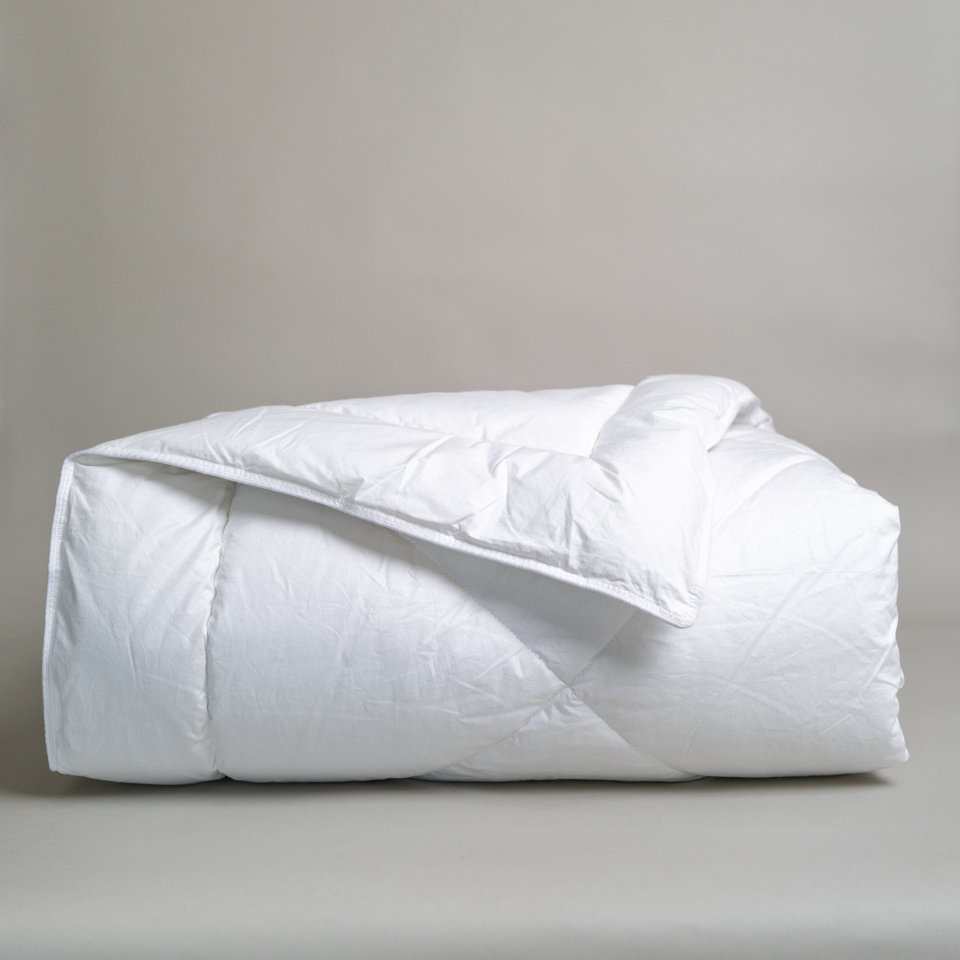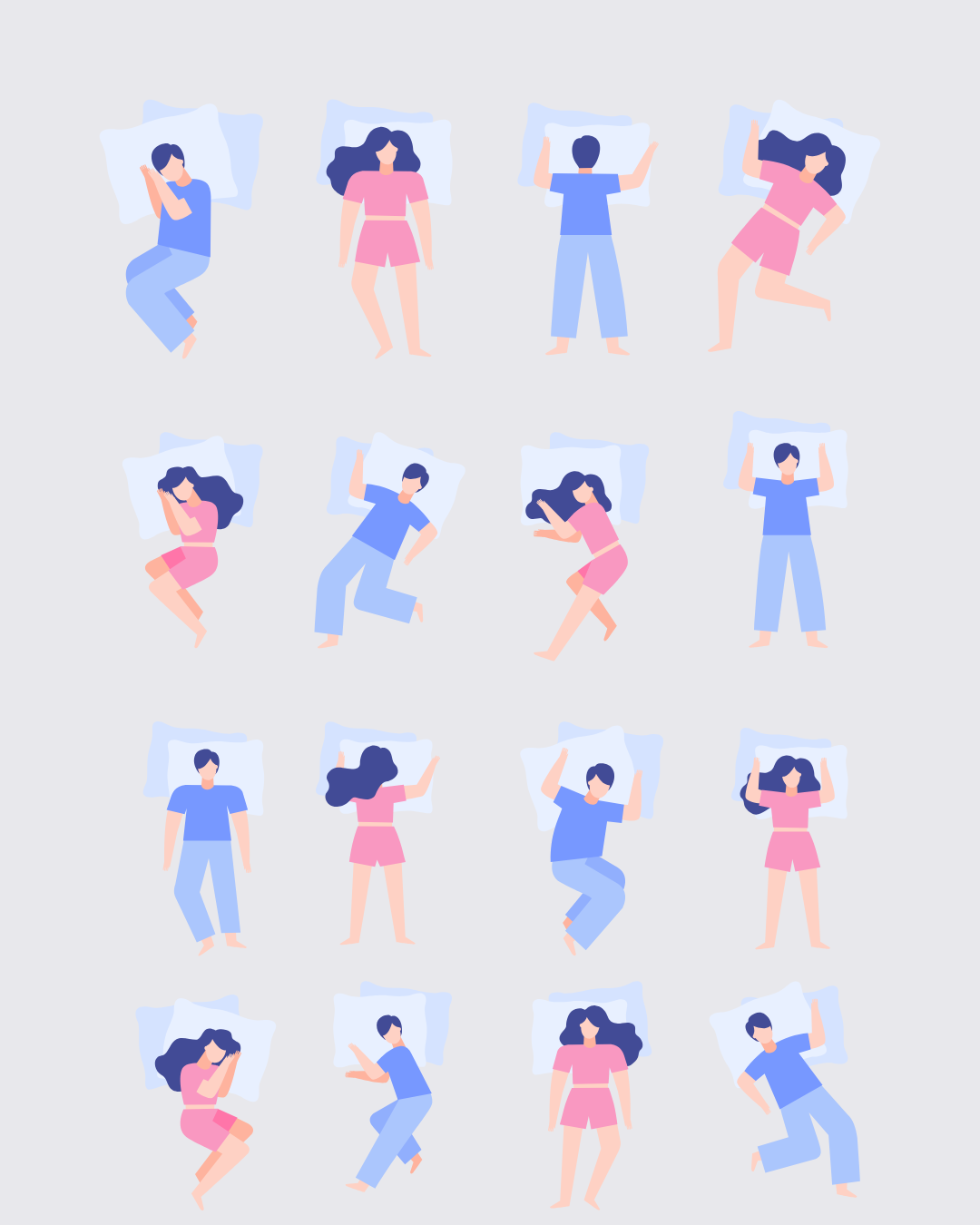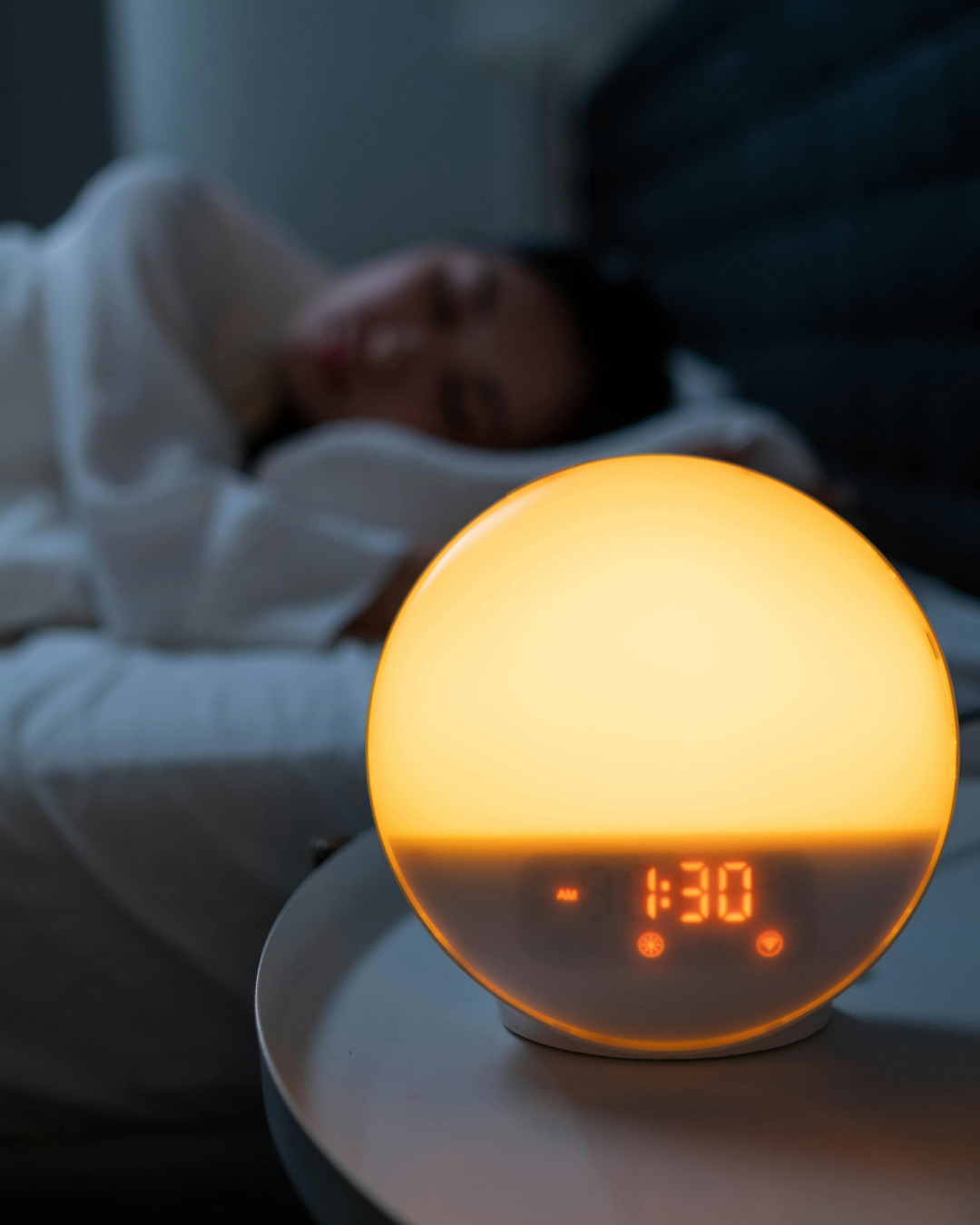Your sleep position was likely determined without any conscious thought when you were young. Changing that position can be difficult and require retraining. Is it worth the effort?
Is There a Best Sleep Position?
When we’re young, we may be able to fall asleep easily. As we get older, sleep seems to become more tenuous. Getting to sleep and staying asleep may require far more effort and preparation of our minds, bodies, and sleeping environment. If the position in which you sleep is working for you, carry on. If not, here are a few things to consider.
1. What Are the Benefits of Different Sleep Positions?
Sleep positions—side, back, and stomach—are general descriptions. Each position has variations. We may also change position throughout the night. The position in which you fall asleep and remain most of the night would be considered your sleep position. Here are the pros and cons of each.
Sleeping on Your Back (Supine Position)
Back sleepers might sleep in the soldier position, with their arms by their sides, in the starfish position in which their arms are bent up and legs are spread apart, or some combination of the two. Although the supine position is the least likely to cause wrinkles and might help those with chronic back issues, particularly when a pillow is placed under the knees, back sleeping can worsen gastroesophageal reflux disease (GERD) and obstructive sleep apnea. That’s the reason for the chronic refrain by wannabe sleepers to their snoring bed partners to “roll over.”
Sleeping on Your Stomach (Prone Position)
Stomach sleeping, or sleeping in the prone position, is the least common sleep position. According to an article on sleep positions by Houston Methodist, there is no “best” or “worst” sleep position, but, if sleep positions were rated, the worst sleeping position would be stomach sleeping. Sleeping on the stomach requires the sleeper to turn their head to breathe, which “can put stress on the neck and flattens the natural S-shaped curve of our spine while we sleep.”
Sleeping on Your Side
Side sleeping is the most popular sleep position. It’s associated with several potential health benefits including lowering the incidence of neurodegenerative disease, easing of GERD, providing positional therapy for obstructive sleep apnea, and reducing neck and back pain (when a small pillow is placed between the knees).
Side sleeping, more common for women than men, can range from the fetal position, in which the sleeper is curled up on their side, to the log position in which the back is mostly straight. If you’re a fetal position sleeper, a less tight ball could be better for your spine alignment, particularly when you place a small pillow between your knees to eliminate pressure on your hips.
Positioning yourself on your side or stomach can help airways stay open to reduce snoring and alleviate mild sleep apnea. However, sleeping on your side or stomach can cause breakouts or wrinkles over time and worsen symptoms of heartburn. All things considered, “sleeping on the side . . . is a good way to sleep,” according to Mayo Clinic sleep specialist in an article on the Mayo Clinic News Network.
That raises the question of which side is better to sleep on. Sleeping on the left side might be better for people with GERD, according to a recent article on the effect of sleep position on heart and brain health by the American Heart Association News.
As we get older, sleep position can have a larger effect on medical issues, according to an article on the Johns Hopkins website. However, if you’re getting sufficient sleep, and have no health problems, there is no need to change your sleep position. That is particularly true as trying to change your sleep position could disrupt the good thing you’ve got going.
2. What Do Our Sleeping Positions Say About Us as a Couple?
The sleeping positions of couples range from spooning to sleeping back-to-back. Each position is laden with implied meaning as to the status of the couple’s relationship. According to sleepfoundation.org, spooning tightly “may suggest relationship closeness,” while back-to-back sleeping signifies “comfort and security in your relationship.” The meanings of sleep positions are certainly open to interpretation. Sleepfoundation.org notes the “cliffhanger” position, sleeping on opposite sides of the bed, can “indicate a rupture in the relationship” or simply reveal the couple are sleeping in a hot environment and it “is most likely the best temperature option.” Reading a couple’s sleep positions can be a bit like interpreting a horoscope.
“It’s normal to change body positions numerous times during the night. These movements may occur subconsciously and may have little to do with the health of your relationship,” according to a sleep expert in the article on sleep positions at the Sleep Foundation. We agree, most of the time, it’s simply a matter of two sleepers getting comfortable.
Whatever the sleeping position, there are benefits to lying down as a couple, including the chance of “pillow talk,” which is the intimate communication that can bring a couple closer. On the other hand, many happy couples have found that their relationships are healthier because they sleep in separate beds or separate rooms. This type of “sleep divorce” is particularly beneficial when one or both partners snore or suffer from restless sleep, the partners have different bed or wake times, or they sleep best in different sleep environments. Like individual sleepers, each couple must do what works best for them.
3. What Sleeping Position Is Best for Pregnancy?
“Side sleeping also is recommended during pregnancy, especially the last trimester. And sleeping on the left side is best because it keeps pressure off internal organs and promotes healthy blood flow,” according to an article in the Mayo Clinic News Network.
4. How Should Babies Be Positioned for Sleep?
The American Academy of Pediatrics continues to recommend that infants be placed on their backs for sleep. Additionally, in 2022, the recommendations were updated to include “use of a firm, noninclined sleep surface; room sharing without bed sharing; and avoidance of soft bedding and overheating.” It is recommended that babies sleep in the same room, but not in the same bed, as their caregivers until they are six months old.
5. How Should I Sleep to Reduce Snoring?
Assuming you’ve eliminated obstructive sleep apnea, or another health concern, as the reason for your snoring, consider raising your torso or propping up your head on a pillow. You might also consider sleeping on your side to reduce snoring. If you’re a back sleeper, try going to sleep on your side with a pillow behind your back to encourage you to remain on your side.
6. How Can I Change My Sleep Position?
It can be difficult to change the habit of a lifetime of sleep. “Sometimes there’s more harm than good in trying to control your position,” according to the past president of the American Academy of Sleep Medicine, in an article on sleep position in National Geographic. Should you have a reason to make the effort, like obstructive sleep apnea, GERD, or back or neck pain, you might consider using pillows to support your new sleep position.
Positional therapy, using a device to keep you from sleeping on your back, comes in a variety of forms, beyond the simple pillow. These include belts with attached balls or packs that discourage you from rolling onto your back, smart pillows that sense snoring and inflate to turn your head slightly, and monitors worn during sleep that create a vibration when you attempt to change position. Unfortunately, many of these devices can be disruptive to sleep, which can have its own negative health effects. You should discuss the use of positional therapy, alone or with other sleep apnea treatments, with your healthcare provider.
7. What Pillows Support Your Favorite Sleep Position?
If, like most people, you sleep on your side, you should be sure that your pillow offers the proper support to keep your neck and spine at the same level. That means a medium to firm pillow like our rhapsody wrap, diamond support®, double chamber firm, or aquaplush® firm pillows. If you’re a back sleeper, consider one of our softer pillows like our 25%/75% white goose down and feather pillows, double chamber soft, or aquaplush® pillows. If you sleep on your stomach, you’ll want to consider our softest white goose down pillow.
If you like to wrap your arms and legs around a pillow, or you need to place a pillow behind you to keep you propped on your side, choose one of our body pillows. Our boudoir and travel pillows make the perfect cushion for under or between your knees.
Curl up (or stretch out) and have a great night’s sleep!®
-Team at down etc
Read more:
Is Snoring Affecting Your Sleep?
5 Benefits of Hugging a Pillow
Couples Should “Pillow Talk” for a Healthy Relationship
What Is a Sleep Divorce and Should You Consider One?
About down etc
For over twenty years, down etc has worked with hoteliers and professional housekeepers in hotels around the world to provide the pillows and bedding that will offer hotel guests memorably great sleep. Through our retail website, we seek to provide products that will result in the same quality sleep for our customers at home. We believe in the restorative power of a great night’s sleep, whether at home or away.
DISCLAIMER: You should not rely on any of the foregoing as a substitute for, nor does it replace, professional medical or health and wellness advice, diagnosis, or treatment by a healthcare professional. If you have specific concerns or a situation in which you require professional or medical advice, you should consult with an appropriately trained and qualified specialist, such as a licensed physician, psychologist, or other health professional. Never disregard the medical advice of a physician, psychologist, or other health professional, or delay in seeking such advice, because of the information or content offered or provided on the Site. The use of the Site and all information and content contained thereon is solely at your own risk.






